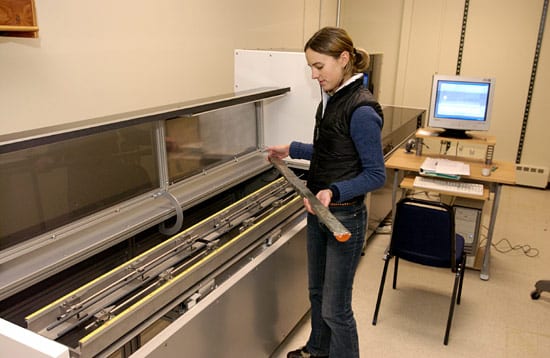Scanning the Seafloor
March 1, 2005
WHOI researchers and colleagues from other laboratories will be able to look at mud from the seafloor in a new way, thanks to a high-tech scanner capable of making rapid, non-destructive, ultra-high-resolution analyses of sediment cores from the seafloor around the world. The new instrument, one of only two in the world and the only one in operation in the U.S., will enable scientists to analyze sediment cores using X-ray fluorescence (XRF) bulk geochemistry, digital X-radiography, and digital photography in normal air pressure conditions. Researchers will use the new scanner for projects ranging from hydrological paleoenvironmental reconstructions to studies of the source of sediments on the seafloor, the geochemistry of rocks, hydrothermal deposition, and chemical contamination in sediments. In addition, the scanner provides extensive capabilities for pre-sampling characterization of sediment cores curated at the WHOI Seafloor Samples Laboratory, with special emphasis on cores to be recovered with a new long piston coring system under construction. It will also be used to study other materials, such as rocks, corals, and speleothems, commonly known as cave formations

